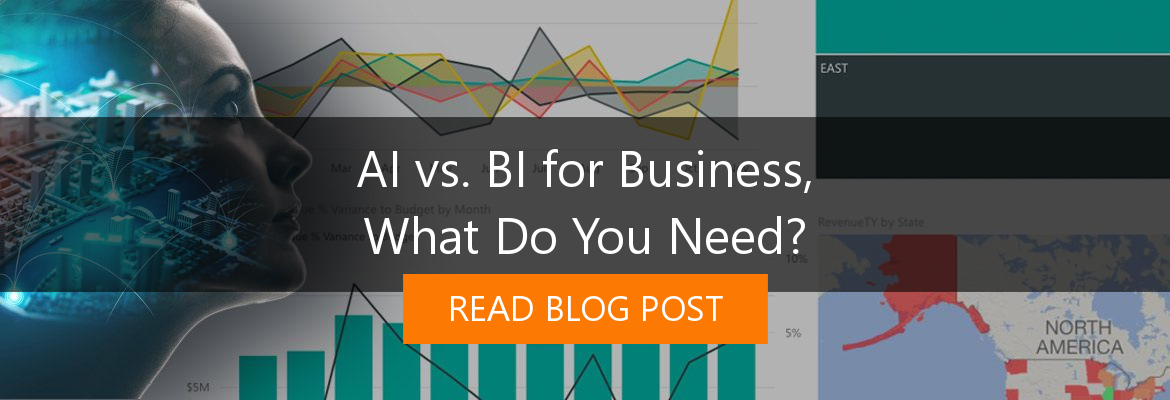
With business intelligence (BI) software playing an increasingly important role in the modern enterprise, the technology is poised for an oversized impact in the coming year.
As data stores scale and business need for advanced analytics and modeling get more desperate, only business intelligence software is uniquely situated to assist businesses with both the data warehousing and analytics needs required to respond to situations or market changes that can sometimes occur faster than they can react.
With such an important mandate, BI will need to continue adapting to the shifting needs of the business world through the coming year. In this post, we’ll look at emerging business intelligence trends, challenges and changes in the enterprise, and how BI software will address each.
Anywhere Analytics
The workforce has changed—with the advancement of cloud computing and mobile devices; enterprise employees are no longer required to be tethered to a desk to get their work done. It’s estimated that businesses gain 240 hours of additional output per year from employees utilizing mobile devices, and 71% of employees spend more than 2 hours per week accessing company information on mobile devices.
Of course, this means your BI software needs to adapt to the shifting enterprise attitude towards mobile in order to arm employees with the intelligence they need to perform their tasks, wherever they are. Early ‘mobile’ implementations of BI software were poorly executed, essentially porting desktop versions of software to mobile screens, with less-than-optimal results.
In 2019, BI vendors will take the next step in addressing the mobile evolution and create solutions that address the need for better analytics on mobile, empowering a mobile workforce with a solution that is completely rethought to provide a better user experience—providing greater productivity for your enterprise.
Automated Data Science
The mere mention of ‘automation’ strikes terror in the hearts of workers everywhere, but, driven by a lack of skilled employees in data science, automation is aiming to plug that gap by enabling organizations with automated data-science.
According to a Gartner report, it’s estimated that by 2020, more than 40% of data science tasks will be automated, resulting in increased productivity and broader usage by ‘citizen data scientists.’
What does this look like for your enterprise? Data will truly be democratized as the end users who rely on data analysis to complete their day-to-day tasks will no longer have to deal with data scientists or business operations bottlenecks, as automation will enable enterprises to better categorize, sort, and store data, and automate large parts of the data aggregation, analysis, and reporting process.
Automation will empower rapidly scaling businesses to address data science shortcomings by applying algorithms to existing data—definitely one of the primary use cases for AI, finally realized in the coming year.
Natural Language Processing
Natural Language Processing (NLP) – the combination of Machine Learning and linguistics that enables you to speak to your phone or computer or car or smart speaker like it’s a person, has made incredible strides forward over the past couple of years. And it’s poised to make more of an impact, particularly in the business world, in the coming months.
BI software is, at its core, about the democratization of data—putting the data and analysis that matters into the hands of the people in the organization who require it to support them in their role. NLP is helping to eliminate traditional barriers that may have existed between end users and the data itself—similar to automation, NLP can reduce the need for data scientists by allowing individual contributors to access data via natural language requests rather than SQL queries.
Not only will requests be able to take place via natural language, but answers will be delivered in natural language as well, giving instantaneous, simple-to-understand answers based on actual data analysis. Imagine asking a bot how many units of stock were moved last quarter and receiving an instant, accurate response—the time saved by not having to locate the correct dashboard or write an SQL query to locate the correct response across an entire enterprise will truly be staggering and enable staff to act sooner in response to critical issues.
Data Governance
The early years of BI implementation were all about collecting data from disparate sources and unifying it in one location, giving enterprise businesses access to stores of data that were previously unfathomable.
However, collecting and storing data is only one part of the BI battle—and many early implementations of BI failed to consider the long term when it came to ensuring data consistency and accuracy. A major business intelligence trend in 2019 will focus on data governance—ensuring that the data being used to drive your business decisions is not only accurate for internal decision-making but also compliant with external regulations, such as GDPR and the California Consumer Privacy Act. Failing to maintain accurate data will carry an enormous cost in the coming years, particularly as AI and BI tools continue to develop and the risk of deriving faulty answers from inaccurate data increases exponentially.
GDPR – The Good, The Bad & The Ugly
Find the Best BI Software for Your Business
2019 holds an incredible amount of promise for enterprise businesses using business intelligence software to unify their data, perform analysis, and mobilize their employees with the intelligence they need to drive informed business decisions. In the business world, the amount of data collected, the amount of storage required to house that data, the governance required to ensure data fidelity, and the cloud access required to mobilize a modern workforce only stands to increase exponentially over the next year.
By staying attuned to forthcoming BI trends, and partnering with a trusted BI and analytics provider, you are positioned for success this year and into the years to come. To help you in your search to find the right BI software, we have put together an overview of the Top 7 Microsoft Dynamics Business Intelligence and Analytics Platforms. In it, you will discover what functionality is critical to successful BI implementation and learn what 7 of the best BI solution providers in the Microsoft Dynamics ecosystem have to offer. You can also skip ahead and download the printable checklist to track your evaluation of vendors and products!
Repost from our partner Jet Global, March 13, 2019






